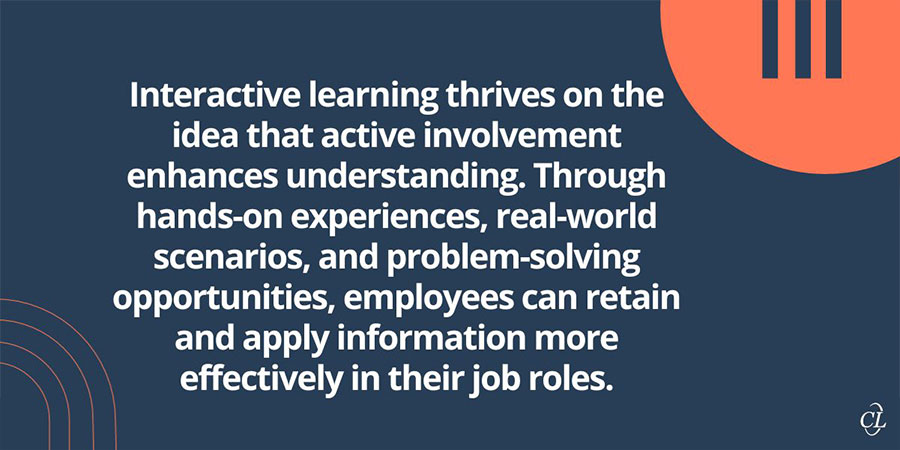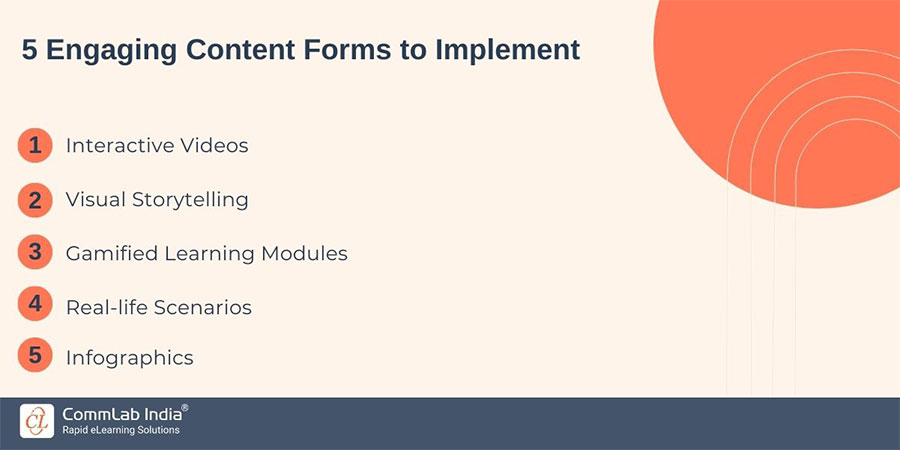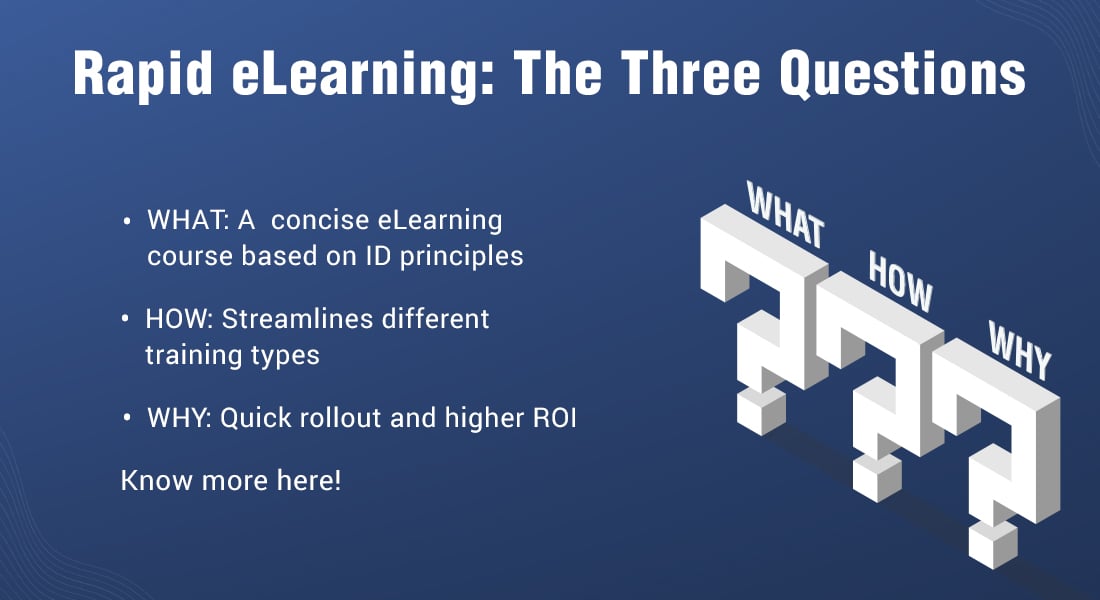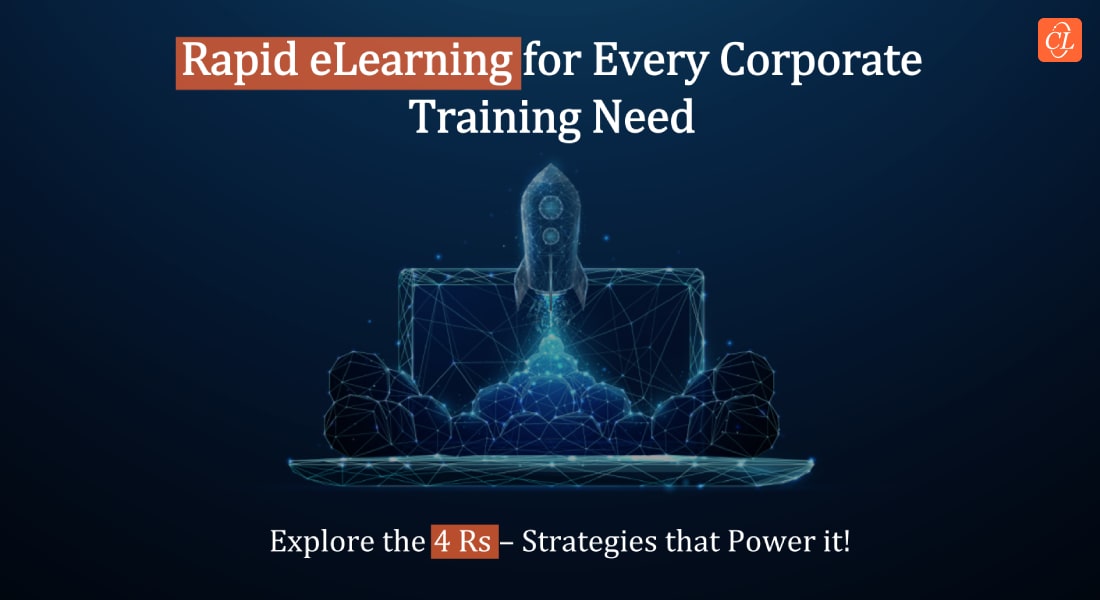Rapid eLearning Development Best Practices to Boost Training ROI

Disappointed with your training programs' results? Seeking an effective solution to enhance training ROI? Rapid eLearning development is the answer. This approach prioritizes speed and agility, accelerating your training ROI (return on investment). Wondering how? Explore our blog for best practices and strategies to transform your organization's learning experience. Buckle up to revolutionize your training programs with these game-changing tips!
Unlocking Rapid eLearning Development for ROI
Rapid eLearning development provides a quick solution for organizations seeking efficiency and heightened ROI. This approach leverages authoring tools and pre-built templates to ensure faster course creation and adaptation to evolving business needs. The need for agility in today's business landscape makes rapid eLearning a strategic choice for maintaining a competitive edge.
Rapid eLearning: What and Why?
Rapid eLearning development is an innovative approach that utilizes authoring tools, templates, and pre-built modules to create digital learning content swiftly. It matters for ROI as it ensures quick adaptation to changing needs, reduces development time and costs, and aligns with the fast-paced business environment, ultimately maximizing the return on investment in training programs.
Here are some unmissable benefits of rapid eLearning development:
1. Time-saving: Reduce training design and development time, encouraging continuous employee learning and development.
2. Cost-effective: Trim expenses on design, printing, and travel, offsetting upfront tool investment.
3. Enhanced Adaptability: Makes it possible to quickly respond to changing business requirements, industry regulations, or technological advancements, ensuring training content remains up-to-date.
4. Increased Engagement: This approach leverages interactive elements and multimedia to captivate learners, fostering higher engagement and knowledge retention.
5. Agile Updates: Easily modify and update content to address emerging needs or refine training based on learner feedback, maintaining relevance and effectiveness.
Discover more about rapid eLearning:
Key Elements of Rapid eLearning Development: Simplicity, Accessibility, Interactivity
1. Simplicity: In rapid eLearning, simplicity is paramount. Break down complex topics into microlearning modules to ensure easy comprehension. Use clear and concise language, steering clear of unnecessary jargon. Organize content logically and employ multimedia judiciously for enhanced engagement without overwhelming learners.
2. Accessibility: Rapid eLearning demands universal access. Ensure compatibility across devices, optimizing the user experience for a broader audience. Prioritize accessibility to enhance the reach and effectiveness of your training programs, fostering a seamless learning experience.
3. Interactivity: Interactivity is a key in rapid eLearning. Infuse storytelling techniques for relatable and engaging content. Incorporate gamification elements like badges and leaderboards to boost engagement. Integrate quizzes and assessments for reinforcing understanding, providing instant feedback. Leverage multimedia elements such as videos and images to create a dynamic and interactive learning environment.

→ Download Now: Rapid eLearning Design for Quick Rollout [eBook]
Best Practices for Utilizing Rapid eLearning Development: From Planning to Implementation
1. Identify Your Learning Objectives
Before embarking on the rapid eLearning development journey, a crucial first step is to define clear and concise learning objectives. Adopting the SMART framework ensures that these objectives are Specific, Measurable, Achievable, Relevant, and Time-bound. Let's break down how to choose a learning objective using an example:
Example Learning Objective: Enhancing Customer Service Skills
1. Specific: Instead of a vague goal like "improve customer service," a specific objective would be "enhance communication skills in handling customer inquiries."
2. Measurable: Establish criteria to measure progress. For our example, "increase positive customer feedback by 20% within three months."
3. Achievable: Ensure the objective is realistic and attainable. In our case, it might involve providing employees with communication training and resources.
4. Relevant: The objective should align with broader organizational goals. In our scenario, improved customer service aligns with the organization's focus on customer satisfaction.
5. Time-bound: Set a timeframe for achieving the objective. For our example, "achieve the 20% increase in positive feedback within the next three months."
6. By following the SMART criteria, the learning objective becomes: "Within the next three months, enhance employees' communication skills to increase positive customer feedback by 20%, aligning with our goal of improving overall customer service satisfaction."
This specific, measurable, achievable, relevant, and time-bound learning objective provides a clear roadmap for the development of training content. It ensures that the subsequent rapid eLearning modules are targeted, effective, and directly contribute to the organization's goals, ultimately enhancing the ROI of the training program.
2. Keep It Simple
Incorporate simplicity into your eLearning design to enhance both development speed and learner engagement. Opt for user-friendly authoring tools like Articulate Storyline or Adobe Captivate, leveraging pre-built templates and drag-and-drop features. By reducing unnecessary complexities, you expedite the development process, making it more efficient and accessible. Prioritize clarity in content organization and presentation to enhance understanding, ensuring a seamless learning experience for your audience. This strategic focus on simplicity not only accelerates development but also contributes to more impactful and effective eLearning courses, aligning with the principles of rapid eLearning development.
3. Adopt Collaborative Development
Foster collaboration among subject matter experts, instructional designers, and developers. This collaborative approach accelerates the development process by leveraging diverse expertise. Engage stakeholders from different departments to ensure a holistic perspective. Collaborative development minimizes bottlenecks in the review process, leading to faster turnaround times and more effective learning solutions.
4. Utilize Rapid Authoring Tools
Choose user-friendly rapid authoring tools such as Articulate Storyline or Adobe Captivate. These tools offer pre-built templates, drag-and-drop features, and compatibility across devices. The intuitive interfaces enable your team to quickly adapt, expediting course development. Rapid authoring tools enhance efficiency, reducing the time and resources required for content creation.
5. Choose Appropriate Content Formats
Tailor content formats to align with learning objectives and enhance engagement. For instance, consider incorporating video-based learning for visual appeal and improved retention. There are other content formats such as infographics, microlearning formats, etc, to choose from. Integrate interactive elements, such as quizzes and simulations, to break monotony and keep learners actively involved. The strategic selection of content formats contributes to the overall effectiveness of your rapid eLearning initiatives.

Conclusion: Transforming Training with Rapid eLearning
Revolutionize your training programs with these best practices for rapid eLearning development. By optimizing efficiency, engagement, and accessibility, organizations can unlock the full potential of eLearning and elevate their ROI. Embrace the future of training today! Ready to revolutionize your training programs? Explore our eBook and discover the best design practices for rapid eLearning and ensure a quick and effective rollout.




![10 Must-Know Tips for Rapid eLearning Course Rollout [Infographic]](https://blog.commlabindia.com/hubfs/blogs/tips-rapid-elearning-course-rollout-infographic.jpg)
